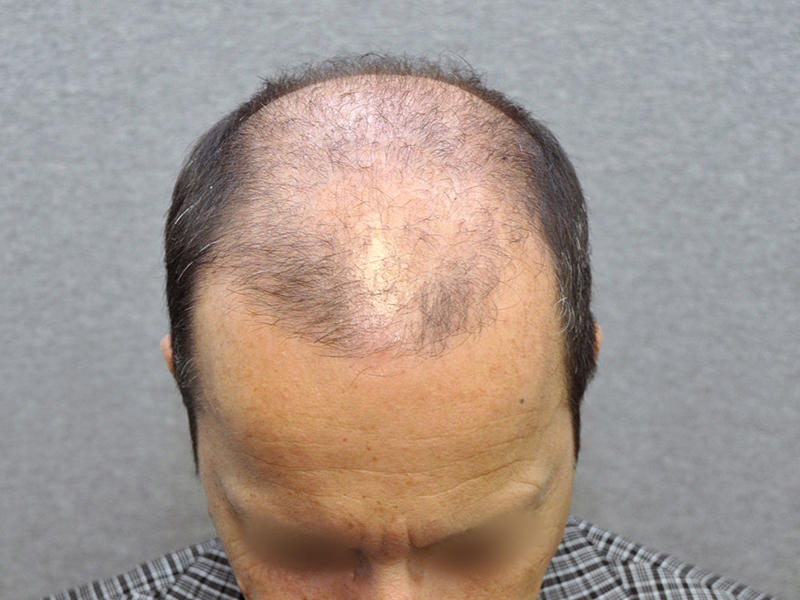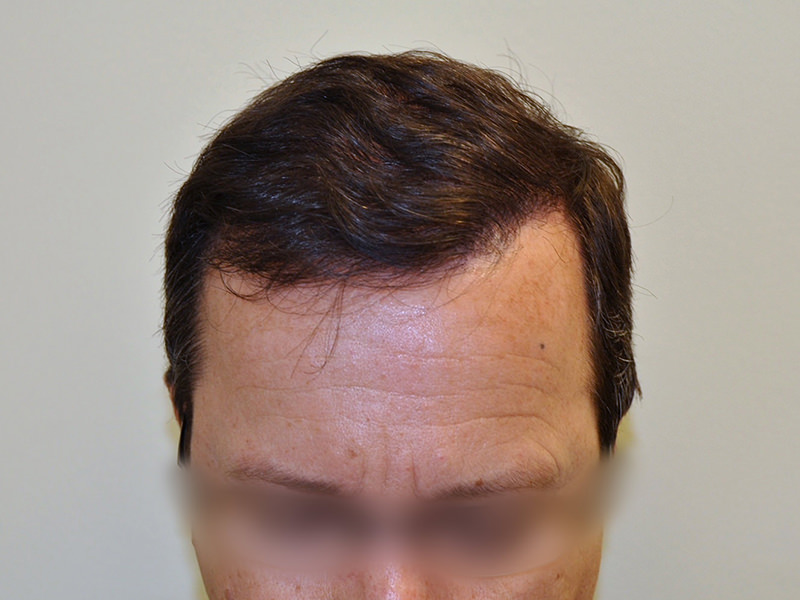
What Determines Density in a Hair Transplant?
Donor Availability – Robbing Peter to Pay Paul:
One thing that I find myself frequently explaining to patient seeking hair restoration is that when we perform a transplant, we are not making new hair, but rather moving existing hair from a location where it is thicker and relatively permanent (usually the back inside of the scalp), to an area where hair has thinned or has been lost.
If we could make new hair, then the amount that we could transfer would be limitless, but the reality is that we are constrained by the number of follicles that we can safely harvest without causing visible thinning in the donor areas. To use a common idiom, we are “robbing Peter to pay Paul”.
Because we are constrained by the amount of available donor hair, we have to consider the trade-off between coverage and density. In other words, we sometimes need to decide whether we wish to cover a larger area or sparsely, or a smaller area more densely. For this reason, meticulous planning is essential, and this is one of the reasons why I spend so much time doing in-person consultations and developing individualized treatment plans for our patients.
Graft Numbers – Not the Holy Grail:
Often when patients come to see me, they are very concerned about the number of graphs that they will be receiving for a certain price. This is probably because many hair transplant chains and overseas clinics will charge per graft. In my opinion, this results in patients, putting far too much emphasis on how many grafts that they are paying for rather than on the actual result that they are trying to achieve.
Imagine a person commissioning an artist to paint a picture. While the client might specify the subject matter of the painting, the colour scheme, or the size of the canvas that they would be getting for a certain price, but it would never occur to a person to contract an artist for a certain number of brush strokes. The client should be concerned about getting a beautiful piece of art that meets or exceeds their expectations, and not about the number of brushstrokes that the artist uses to create it.
Focussing excessively on the number of hairs that are transplanted fails to take into account many of the other factors that are important in determining the ultimate density of a transplant, and that I carefully consider for each individual patient. Hair transplantation is not a simple numbers game, and there is far more that goes into the plan than just transplanting the largest quantity of follicles that is possible, with the most densely packed grafts. We have seen many patients that have travelled overseas to have hair transplant “mega-sessions” with extremely dense packing, only to be disappointed by poor growth and donor site depletion.
Patient and Hair Characteristics – An Individualized Approach:
In addition to assessing the size of the target area, I take into account factors including patient age, gender, ethnicity, and facial structure. I carefully assess the characteristics of the hair such as colour, caliber and curl, both in the donor and recipient areas, as these factors have a significant impact on the density that we can achieve. When the donor hair is thicker in caliber/diameter we can expect more coverage and density with a smaller number of grafts. This might allow us to consider covering a larger area. When the donor hair is thinner, we might need more grafts to achieve the same density.
By way of example, if we consider a patient with fine, blonde hair it may be easier to create naturalness, but harder to create density, and for this reason, we can sometimes consider using more grafts, and using more robust, two-hair follicular units closer to the hairline. In contrast, for a patient with more curly salt-and-pepper coloured hair, it can be easier to create density, but we have to be very careful about using only the most refined single hair follicular units close to that hairline so that the results look completely natural.
Another important consideration is the skin and hair color. When there is a good colour match between the skin and the hair, or if the hair colour is lighter than the skin colour, then a transplant can look more dense. Conversely, the contrast between dark hair and lighter skin can sometimes look less dense. This can be relevant in certain ethnic groups, such as Asians who often have thick straight, black hair contrasted against light skin.
Technique
It is imperative that whether we are doing an FUT or an FUE procedure, that our technique is meticulous with low transection rates and high graft survival. For this reason, we have one of the most well trained and experienced teams available. We are extremely careful with graft handling and storage, often using platelet rich plasma derived growth factors to supplement our temperature controlled graft storage solution.
Another important determinant of visual density is the technique that is used to create the recipient sites, and place the grafts. As a hair transplant, surgeon, this is where I feel that I have the most value-add. When creating recipient sites, I use the smallest Instruments possible, and pay extremely close attention to correct position and angulation, especially in the frontal hairline, crown, and temple areas where angles are more acute, and re-creating natural growth patterns is essential for natural looking results. Appropriate graft direction and angulation also allows me to “shingle” the transplanted hair shafts in order to create maximum visual density.
In Summary:
In summary, hair transplantation is not simply a number’s game. Huge graft numbers and extremely dense packing do not necessarily equate to good value or good results. It is important that you consult with a true expert hair restoration surgeon who will take into account all of the factors that go into creating an individualized treatment plan, and maximizing the end result.
Call us at (905) 764-7799 to discuss your hair transplant goals. Board-certified surgeons Dr. Mark Korman and Dr. Philip Solomon at Follicle HT Hair Transplant Clinic in Toronto, Thornhill, and Davenport will gladly share their expertise.


